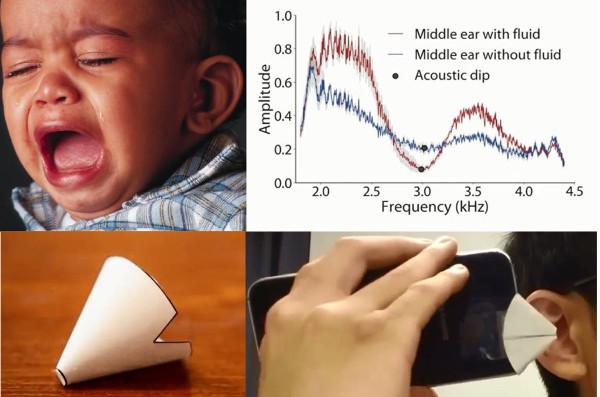Your Phone Might Help Save Your Kid's Hearing

Our eyes seem to always have one issue or another. They can sting (sun block), get blurry (cramming for finals), and occasionally tear up (Steven Spielberg). In contrast, generally, our ears just always work. Except when they don't. A common problem is an ear infection. A build-up of fluid inside the ear can cause complications, starting with extreme discomfort. Without proper care, permanent hearing loss could result.
Adults with an ear infection can get themselves to a doctor and start treatment. But when a small child gets an ear infection, it's hard for the adult to know what's going on. The child is in pain, but there is no outward sign of the problem. Is it an ear ache, or a more serious infection? Things get scary. There's often a rush to the pediatrician or an ear/noise/throat doctor. According to the U.S. National Institutes of Health, ear infections are most common reason for children seeing a pediatrician.
We consider our ears in three parts: outer, middle, and inner. Each part can become inflamed. When the middle ear is affected (otitis media), fluid fills the normally air-filled volume (perhaps because the Eustachian tube is blocked), and can become infected. (However, fluid is not always due to infection). Antibiotics may be prescribed. A surgical procedure (myringotomy) may be required; a tiny incision in the eardrum relieves the pressure. Or, a tube may be inserted.
It's late at night, and your child is in pain. Is it an ear infection? What should you do? Researchers at the University of Washington in Seattle have developed a simple diagnostic tool using your smartphone, and a piece of paper. Using an app, the phone emits soft, audible chirps that are directed through a paper cone to the ear canal. The phone listens for the reflected chirp sounds, and determines if there is fluid behind the eardrum. The response differs in the same way that tapping on an air-filled balloon makes a different sound than tapping on a water balloon.
When the researchers tested their app, it correctly identified fluid 85% of the time — similar to the result from specialized medical devices. But this method is far simpler, and one that a parent can do at home. It also has applications in areas where specialized devices are not available or the quality of care is low.
The app is not yet commercially available, but the plan is to bring it to market, pending tests and FDA approval. The app wouldn't negate a trip to the pediatrician, but it could give everyone an early clue to what's going on.






























































